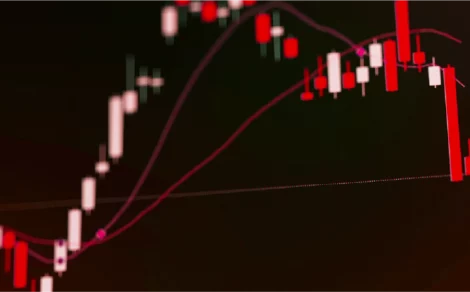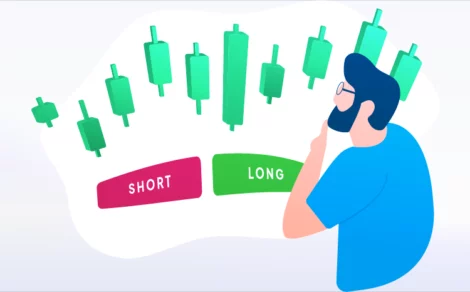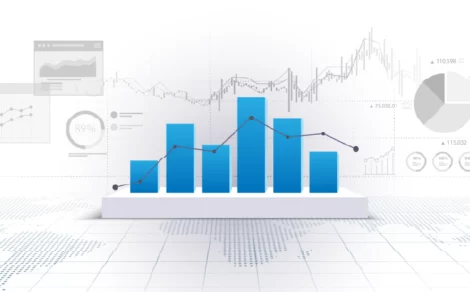Toruscope » Online Trading » Basis in Futures Trading: A Complete Guide for Smart Traders
When it comes to trading in futures, grasping how prices are determined is essential for both investors and traders. One key idea they often rely on is known as the “basis.” It’s more than just a gap between numbers, it directly influences how trades are planned and risks are handled.
In simple terms, the basis is the difference between an asset’s current market (spot) price and its futures contract price. But this gap doesn’t exist in isolation. It’s shaped by several moving parts like storage fees, interest rates, and what the market expects in terms of future supply and demand.
Grasping the intricacies of basis is essential for those engaged in basis trading, a strategy that seeks to capitalise on the fluctuations between spot and futures prices. By delving into the components and implications of basis, traders can make informed decisions and optimise their positions in the market.
How to Calculate the Futures Basis?
Calculating the basis is straightforward: Basis = Spot Price – Futures Price
For instance, if the spot price of a commodity is £100 and its futures price is £105, the basis would be -£5. This negative basis indicates that the futures price is higher than the spot price, a situation often observed in markets experiencing contango.
Conversely, a positive basis occurs when the spot price exceeds the futures price, a condition known as backwardation. Understanding these scenarios is vital for implementing effective basis trading strategies.
Positive vs Negative Basis: What do They Indicate?
When the basis is positive, it means the spot price of an asset is higher than its futures price. This usually happens when there’s strong demand for the asset right now, pushing up the spot price. Traders often see this as a sign that supply is tight or demand is picking up in the short term.
On the flip side, a negative basis means the futures price is higher than the spot price. This can occur when people expect more supply or less demand in the coming months. As a result, futures prices stay higher while the spot price lags behind.
Recognising the nature of the basis is crucial for traders employing basis trading strategies, as it influences decisions on entering or exiting positions.
How does Basis Trading Work: Understanding with Examples
Basis trading involves taking offsetting positions in the spot and futures markets to profit from changes in the basis. This strategy is prevalent among hedge funds, asset managers, and other institutional investors.
For example, consider a trader who identifies a negative basis in the bond market. They might purchase the bond in the spot market while simultaneously selling a futures contract. If the basis narrows (i.e., the spot price increases relative to the futures price), the trader can profit from the convergence.
This approach is not limited to bonds; it extends to commodities, equities, and even cryptocurrencies, where traders exploit discrepancies between spot and futures prices.
Why Traders Use Basis Trading in Futures Markets?
Engaging in basis trading offers several advantages:
- Risk Mitigation: By holding offsetting positions, traders can hedge against adverse price movements in the underlying asset.
- Profit from Price Convergence: Traders can capitalise on the narrowing or widening of the basis, generating returns from market inefficiencies.
- Leverage Opportunities: Utilising the repo market, traders can finance positions at lower costs, enhancing potential returns.
- Diversification: Basis trading allows for exposure to various markets, including treasury futures, commodities, and equities, providing diversification benefits.
To put it simply, what is basis trading? It’s a strategy that aims to profit from the difference between spot and futures prices by taking offsetting positions.
Popular Basis Trading Strategies Explained
Several strategies are employed in basis trading:
- Cash-and-Carry Arbitrage: Involves buying the asset in the spot market and selling a futures contract, profiting from the cost-of-carry model.
- Reverse Cash-and-Carry Arbitrage: Entails selling the asset in the spot market and buying a futures contract, typically used when the basis is negative.
- Inter-Commodity Spread: Traders take positions in related commodities to exploit price differentials, such as trading crude oil against refined products.
- Calendar Spread: Involves taking positions in futures contracts of the same asset but with different expiration dates, aiming to profit from changes in the basis over time.
These strategies require a deep understanding of market dynamics and the factors influencing the basis.
Risks Every Basis Trader Should Know
While basis trading can be profitable, it carries inherent risks:
- Basis Risk: The risk that the basis does not move as anticipated, potentially leading to losses.
- Leverage Risk: Utilising borrowed funds amplifies both gains and losses, necessitating careful risk management.
- Liquidity Risk: Markets may lack sufficient liquidity, making it challenging to enter or exit positions without impacting prices.
- Interest Rate Risk: Fluctuations in interest rates can affect the cost of carry, influencing the basis and the profitability of trades.
Traders must assess these risks and implement appropriate safeguards when engaging in basis trading.
Conclusion
Understanding the concept of basis in futures trading is essential for market participants aiming to implement effective trading strategies. By analysing the relationship between spot and futures prices, traders can identify opportunities for arbitrage, hedging, and profit generation.
While basis trading offers potential rewards, it also entails risks that necessitate diligent analysis and risk management. As with any trading strategy, success in basis trading hinges on a comprehensive understanding of market dynamics and disciplined execution.
FAQs
-
What Does Basis Trading Mean in Futures?
Basis trading in futures involves taking opposing positions in the spot and futures markets to profit from changes in the basis, the difference between the spot price and the futures price of an asset.
-
Can You Share an Example of Basis Trading in Action?
A trader buys a commodity in the spot market at £100 and sells a futures contract at £105. If the basis narrows to £2, the trader profits from the convergence of prices.
-
What Is the Formula for Calculating Futures Basis?
The basis is calculated by subtracting the futures price from the spot price: Basis = Spot Price – Futures Price.
-
How Is Basis Trading Different from Carry Trading?
A basis trade focuses on profiting from the difference between spot and futures prices, while a carry trade involves borrowing in a low-interest-rate currency to invest in a high-interest-rate currency, profiting from the interest rate differential.
Related Reads
What is Slippage in Trading? Meaning, Causes & Impact Explained
In trading, timing and precision often define success. However, even when a trader believes...
By: torus
- 7 mins
- 01.Jul.2025
- 4(1)
- 97
What is an Option Contract?
Imagine having the flexibility to buy or sell shares at a fixed price, no...
By: torus
- 7 mins
- 01.Jul.2025
- 0(0)
- 43
Types of Financial Instruments You Should Know Before Investing
Before investing funds in any market, it is essential to understand what financial instruments...
By: torus
- 7 mins
- 01.Jul.2025
- 0(0)
- 39
What are Contracts for Difference (CFD)?
Contracts for Difference, commonly known as CFDs, are financial instruments that allow traders to...
By: torus
- 9 mins
- 01.Jul.2025
- 0(0)
- 39
Difference between Short Position & Long Position
Understanding the concepts of short and long positions is essential for anyone interested in...
By: torus
- 8 mins
- 01.Jul.2025
- 0(0)
- 38
Essential Trading Terminologies You Need to Know
Trading in financial markets opens a world full of opportunities. For many first-time investors,...
By: torus
- 8 mins
- 01.Jul.2025
- 0(0)
- 47
Disclaimer: The content provided in this blog is for informational purposes only and does not constitute financial advice or recommendations. The content may be subject to change and revision. Readers are encouraged to conduct their own research and consult with a qualified financial advisor before making any investment decisions. Torus Digital and its affiliates takes no guarantees whatsoever as to its completeness, correctness or accuracy since these details may be acquired from third party and we will not be responsible for any direct or indirect losses or liabilities incurred from actions taken based on the information provided herein. For more details, please visit www.torusdigital.com.
Tenneco Clean Air IPO Listing: Strong Market Debut with 27% Premium
Tenneco Clean Air India Ltd made a confident entrance into the public markets on...
By: torus
- 5 mins
- 19.Nov.2025
-
3.7(6)
-
137
Stock to Buy Today: November 19, 2025
The Indian stock market witnessed a mild decline on November 18, 2025, ending a...
By: torus
- 4 mins
- 19.Nov.2025
-
4.3(3)
-
137
Mirae Asset Infrastructure Fund NFO: A Sector-Focused Bet on India’s Growth
Mirae Asset Mutual Fund has launched a new equity scheme — Mirae Asset Infrastructure...
By: torus
- 4 mins
- 18.Nov.2025
-
4.3(6)
-
137
Emmvee Photovoltaic IPO: Shares Make Muted Market Debut, List Flat At ₹217
Emmvee Photovoltaic Power made a muted debut on 18 November 2025, listing flat at...
By: torus
- 3 mins
- 18.Nov.2025
-
3.7(6)
-
137








